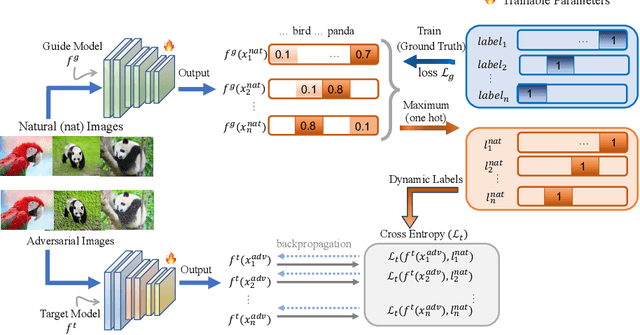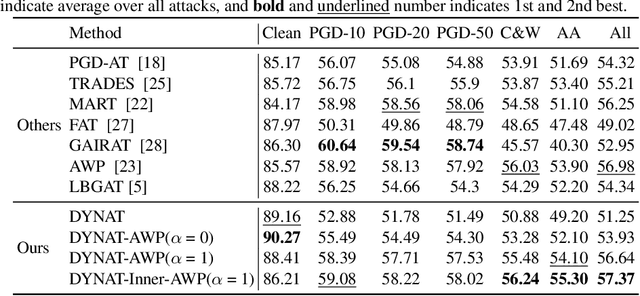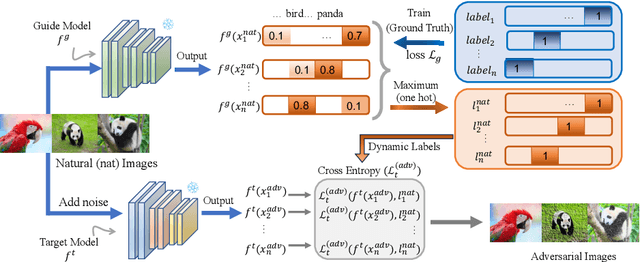Yang Long
AMap: Distilling Future Priors for Ahead-Aware Online HD Map Construction
Dec 22, 2025Abstract:Online High-Definition (HD) map construction is pivotal for autonomous driving. While recent approaches leverage historical temporal fusion to improve performance, we identify a critical safety flaw in this paradigm: it is inherently ``spatially backward-looking." These methods predominantly enhance map reconstruction in traversed areas, offering minimal improvement for the unseen road ahead. Crucially, our analysis of downstream planning tasks reveals a severe asymmetry: while rearward perception errors are often tolerable, inaccuracies in the forward region directly precipitate hazardous driving maneuvers. To bridge this safety gap, we propose AMap, a novel framework for Ahead-aware online HD Mapping. We pioneer a ``distill-from-future" paradigm, where a teacher model with privileged access to future temporal contexts guides a lightweight student model restricted to the current frame. This process implicitly compresses prospective knowledge into the student model, endowing it with ``look-ahead" capabilities at zero inference-time cost. Technically, we introduce a Multi-Level BEV Distillation strategy with spatial masking and an Asymmetric Query Adaptation module to effectively transfer future-aware representations to the student's static queries. Extensive experiments on the nuScenes and Argoverse 2 benchmark demonstrate that AMap significantly enhances current-frame perception. Most notably, it outperforms state-of-the-art temporal models in critical forward regions while maintaining the efficiency of single current frame inference.
vMFCoOp: Towards Equilibrium on a Unified Hyperspherical Manifold for Prompting Biomedical VLMs
Nov 13, 2025Abstract:Recent advances in context optimization (CoOp) guided by large language model (LLM)-distilled medical semantic priors offer a scalable alternative to manual prompt engineering and full fine-tuning for adapting biomedical CLIP-based vision-language models (VLMs). However, prompt learning in this context is challenged by semantic misalignment between LLMs and CLIP variants due to divergent training corpora and model architectures; it further lacks scalability across continuously evolving families of foundation models. More critically, pairwise multimodal alignment via conventional Euclidean-space optimization lacks the capacity to model unified representations or apply localized geometric constraints, which tends to amplify modality gaps in complex biomedical imaging and destabilize few-shot adaptation. In this work, we propose vMFCoOp, a framework that inversely estimates von Mises-Fisher (vMF) distributions on a shared Hyperspherical Manifold, aligning semantic biases between arbitrary LLMs and CLIP backbones via Unified Semantic Anchors to achieve robust biomedical prompting and superior few-shot classification. Grounded in three complementary constraints, vMFCoOp demonstrates consistent improvements across 14 medical datasets, 12 medical imaging modalities, and 13 anatomical regions, outperforming state-of-the-art methods in accuracy, generalization, and clinical applicability. This work aims to continuously expand to encompass more downstream applications, and the corresponding resources are intended to be shared through https://github.com/VinyehShaw/UniEqui.
Learning Global Representation from Queries for Vectorized HD Map Construction
Oct 08, 2025Abstract:The online construction of vectorized high-definition (HD) maps is a cornerstone of modern autonomous driving systems. State-of-the-art approaches, particularly those based on the DETR framework, formulate this as an instance detection problem. However, their reliance on independent, learnable object queries results in a predominantly local query perspective, neglecting the inherent global representation within HD maps. In this work, we propose \textbf{MapGR} (\textbf{G}lobal \textbf{R}epresentation learning for HD \textbf{Map} construction), an architecture designed to learn and utilize a global representations from queries. Our method introduces two synergistic modules: a Global Representation Learning (GRL) module, which encourages the distribution of all queries to better align with the global map through a carefully designed holistic segmentation task, and a Global Representation Guidance (GRG) module, which endows each individual query with explicit, global-level contextual information to facilitate its optimization. Evaluations on the nuScenes and Argoverse2 datasets validate the efficacy of our approach, demonstrating substantial improvements in mean Average Precision (mAP) compared to leading baselines.
Rethinking Brain Tumor Segmentation from the Frequency Domain Perspective
Jun 11, 2025Abstract:Precise segmentation of brain tumors, particularly contrast-enhancing regions visible in post-contrast MRI (areas highlighted by contrast agent injection), is crucial for accurate clinical diagnosis and treatment planning but remains challenging. However, current methods exhibit notable performance degradation in segmenting these enhancing brain tumor areas, largely due to insufficient consideration of MRI-specific tumor features such as complex textures and directional variations. To address this, we propose the Harmonized Frequency Fusion Network (HFF-Net), which rethinks brain tumor segmentation from a frequency-domain perspective. To comprehensively characterize tumor regions, we develop a Frequency Domain Decomposition (FDD) module that separates MRI images into low-frequency components, capturing smooth tumor contours and high-frequency components, highlighting detailed textures and directional edges. To further enhance sensitivity to tumor boundaries, we introduce an Adaptive Laplacian Convolution (ALC) module that adaptively emphasizes critical high-frequency details using dynamically updated convolution kernels. To effectively fuse tumor features across multiple scales, we design a Frequency Domain Cross-Attention (FDCA) integrating semantic, positional, and slice-specific information. We further validate and interpret frequency-domain improvements through visualization, theoretical reasoning, and experimental analyses. Extensive experiments on four public datasets demonstrate that HFF-Net achieves an average relative improvement of 4.48\% (ranging from 2.39\% to 7.72\%) in the mean Dice scores across the three major subregions, and an average relative improvement of 7.33% (ranging from 5.96% to 8.64%) in the segmentation of contrast-enhancing tumor regions, while maintaining favorable computational efficiency and clinical applicability. Code: https://github.com/VinyehShaw/HFF.
Rethinking Score Distilling Sampling for 3D Editing and Generation
May 03, 2025Abstract:Score Distillation Sampling (SDS) has emerged as a prominent method for text-to-3D generation by leveraging the strengths of 2D diffusion models. However, SDS is limited to generation tasks and lacks the capability to edit existing 3D assets. Conversely, variants of SDS that introduce editing capabilities often can not generate new 3D assets effectively. In this work, we observe that the processes of generation and editing within SDS and its variants have unified underlying gradient terms. Building on this insight, we propose Unified Distillation Sampling (UDS), a method that seamlessly integrates both the generation and editing of 3D assets. Essentially, UDS refines the gradient terms used in vanilla SDS methods, unifying them to support both tasks. Extensive experiments demonstrate that UDS not only outperforms baseline methods in generating 3D assets with richer details but also excels in editing tasks, thereby bridging the gap between 3D generation and editing. The code is available on: https://github.com/xingy038/UDS.
Laser: Efficient Language-Guided Segmentation in Neural Radiance Fields
Jan 31, 2025



Abstract:In this work, we propose a method that leverages CLIP feature distillation, achieving efficient 3D segmentation through language guidance. Unlike previous methods that rely on multi-scale CLIP features and are limited by processing speed and storage requirements, our approach aims to streamline the workflow by directly and effectively distilling dense CLIP features, thereby achieving precise segmentation of 3D scenes using text. To achieve this, we introduce an adapter module and mitigate the noise issue in the dense CLIP feature distillation process through a self-cross-training strategy. Moreover, to enhance the accuracy of segmentation edges, this work presents a low-rank transient query attention mechanism. To ensure the consistency of segmentation for similar colors under different viewpoints, we convert the segmentation task into a classification task through label volume, which significantly improves the consistency of segmentation in color-similar areas. We also propose a simplified text augmentation strategy to alleviate the issue of ambiguity in the correspondence between CLIP features and text. Extensive experimental results show that our method surpasses current state-of-the-art technologies in both training speed and performance. Our code is available on: https://github.com/xingy038/Laser.git.
Dynamic Label Adversarial Training for Deep Learning Robustness Against Adversarial Attacks
Aug 23, 2024



Abstract:Adversarial training is one of the most effective methods for enhancing model robustness. Recent approaches incorporate adversarial distillation in adversarial training architectures. However, we notice two scenarios of defense methods that limit their performance: (1) Previous methods primarily use static ground truth for adversarial training, but this often causes robust overfitting; (2) The loss functions are either Mean Squared Error or KL-divergence leading to a sub-optimal performance on clean accuracy. To solve those problems, we propose a dynamic label adversarial training (DYNAT) algorithm that enables the target model to gradually and dynamically gain robustness from the guide model's decisions. Additionally, we found that a budgeted dimension of inner optimization for the target model may contribute to the trade-off between clean accuracy and robust accuracy. Therefore, we propose a novel inner optimization method to be incorporated into the adversarial training. This will enable the target model to adaptively search for adversarial examples based on dynamic labels from the guiding model, contributing to the robustness of the target model. Extensive experiments validate the superior performance of our approach.
Contextual Interaction via Primitive-based Adversarial Training For Compositional Zero-shot Learning
Jun 21, 2024



Abstract:Compositional Zero-shot Learning (CZSL) aims to identify novel compositions via known attribute-object pairs. The primary challenge in CZSL tasks lies in the significant discrepancies introduced by the complex interaction between the visual primitives of attribute and object, consequently decreasing the classification performance towards novel compositions. Previous remarkable works primarily addressed this issue by focusing on disentangling strategy or utilizing object-based conditional probabilities to constrain the selection space of attributes. Unfortunately, few studies have explored the problem from the perspective of modeling the mechanism of visual primitive interactions. Inspired by the success of vanilla adversarial learning in Cross-Domain Few-Shot Learning, we take a step further and devise a model-agnostic and Primitive-Based Adversarial training (PBadv) method to deal with this problem. Besides, the latest studies highlight the weakness of the perception of hard compositions even under data-balanced conditions. To this end, we propose a novel over-sampling strategy with object-similarity guidance to augment target compositional training data. We performed detailed quantitative analysis and retrieval experiments on well-established datasets, such as UT-Zappos50K, MIT-States, and C-GQA, to validate the effectiveness of our proposed method, and the state-of-the-art (SOTA) performance demonstrates the superiority of our approach. The code is available at https://github.com/lisuyi/PBadv_czsl.
Wearable-based behaviour interpolation for semi-supervised human activity recognition
May 24, 2024



Abstract:While traditional feature engineering for Human Activity Recognition (HAR) involves a trial-anderror process, deep learning has emerged as a preferred method for high-level representations of sensor-based human activities. However, most deep learning-based HAR requires a large amount of labelled data and extracting HAR features from unlabelled data for effective deep learning training remains challenging. We, therefore, introduce a deep semi-supervised HAR approach, MixHAR, which concurrently uses labelled and unlabelled activities. Our MixHAR employs a linear interpolation mechanism to blend labelled and unlabelled activities while addressing both inter- and intra-activity variability. A unique challenge identified is the activityintrusion problem during mixing, for which we propose a mixing calibration mechanism to mitigate it in the feature embedding space. Additionally, we rigorously explored and evaluated the five conventional/popular deep semi-supervised technologies on HAR, acting as the benchmark of deep semi-supervised HAR. Our results demonstrate that MixHAR significantly improves performance, underscoring the potential of deep semi-supervised techniques in HAR.
ExactDreamer: High-Fidelity Text-to-3D Content Creation via Exact Score Matching
May 24, 2024



Abstract:Text-to-3D content creation is a rapidly evolving research area. Given the scarcity of 3D data, current approaches often adapt pre-trained 2D diffusion models for 3D synthesis. Among these approaches, Score Distillation Sampling (SDS) has been widely adopted. However, the issue of over-smoothing poses a significant limitation on the high-fidelity generation of 3D models. To address this challenge, LucidDreamer replaces the Denoising Diffusion Probabilistic Model (DDPM) in SDS with the Denoising Diffusion Implicit Model (DDIM) to construct Interval Score Matching (ISM). However, ISM inevitably inherits inconsistencies from DDIM, causing reconstruction errors during the DDIM inversion process. This results in poor performance in the detailed generation of 3D objects and loss of content. To alleviate these problems, we propose a novel method named Exact Score Matching (ESM). Specifically, ESM leverages auxiliary variables to mathematically guarantee exact recovery in the DDIM reverse process. Furthermore, to effectively capture the dynamic changes of the original and auxiliary variables, the LoRA of a pre-trained diffusion model implements these exact paths. Extensive experiments demonstrate the effectiveness of ESM in text-to-3D generation, particularly highlighting its superiority in detailed generation.
 Add to Chrome
Add to Chrome Add to Firefox
Add to Firefox Add to Edge
Add to Edge